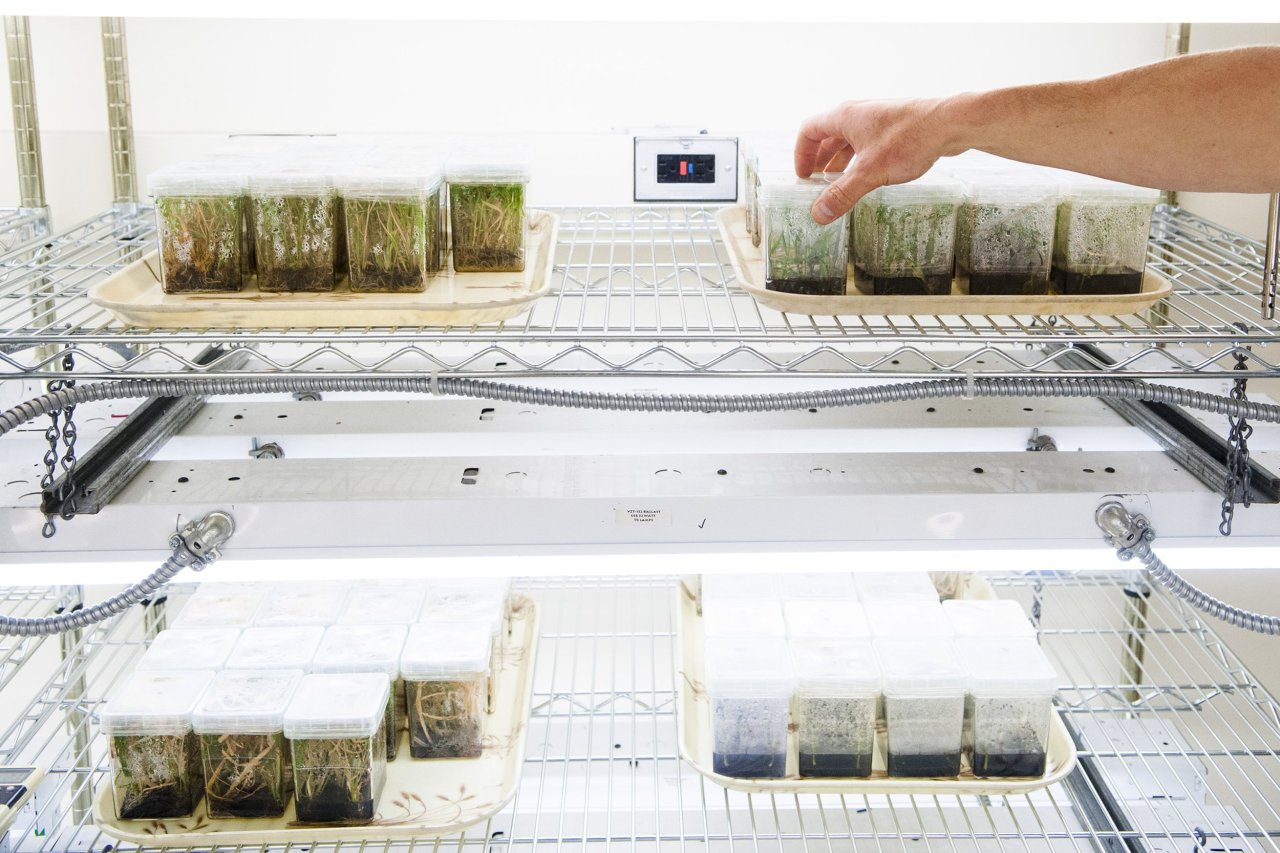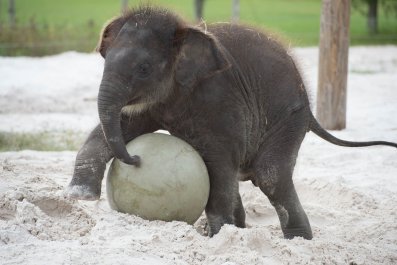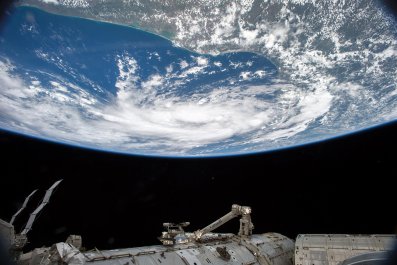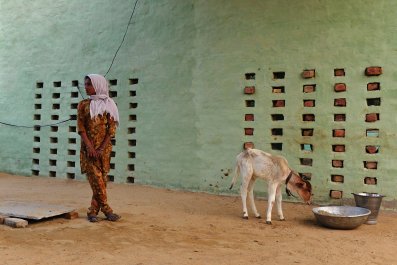In 1948, botanist F.W. Went began a modest experiment that has since grown and grown into what is now a massive science project networked across the globe with ambitions of saving humankind from an increasingly hostile environment. But its initial goal sought to answer a remarkably simple question: How long do seeds survive?
The year the project launched, Life magazine wrote about the "wonderfully unhurried" experiment intended to last 360 years, complete with a photo of Went, a California Institute of Technology professor at the time, standing behind shelves lined with 2,400 slender glass tubes holding 120 types of dried seeds from California-native plants. Sixty-seven years later, Went's seeds reside in a beige multistoried building off the quad of Colorado State University in Fort Collins. Its blandness masks the significance of the project it houses. This "Fort Knox" of gene banks—the nickname for the National Center for Genetic Resources Preservation (NCGRP) of the U.S. Department of Agriculture (USDA)—is designed to safeguard the American food supply from the numerous threats posed by a rapidly changing planet. The stakes couldn't be higher. Droughts, floods, sea-level rise, ocean acidification and the resulting hunger, malnutrition and mass displacement of people will likely become more severe in coming years because of climate change. And though poor people in developing countries will be on the front lines, even wealthier nations like the U.S. are going to have to come to terms with the urgent need for action.
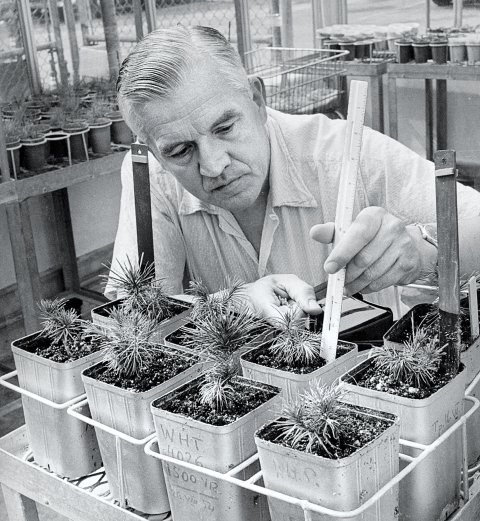
Additionally, the world is losing biodiversity at an alarming rate. Many believe Earth has entered its sixth mass extinction: a human-induced and accelerated decline of animal and plant species of massive proportions. What remains needs to be kept alive and available for breeding. Otherwise, the material could be lost forever—and when crop and livestock diversity is lost, so is our food supply's resiliency to environmental threats. We can't let that happen because the world's population is projected to increase to nearly 10 billion by 2050. And that's a lot of mouths to feed.
Semen, Seeds and a Prayer
The project to track and preserve promising plants for sustenance is over a century old. In 1898, the U.S. government began gene banking, establishing "plant introduction stations" around the country where scientists could evaluate plants and preserve seeds. The USDA sent explorers to Asia, Europe and South America to collect fruits, vegetables and grains. In 1958, it established the National Seed Storage Laboratory on Colorado's Front Range—the urban corridor along the eastern foothills of the Rockies—to consolidate the stash from these stations and the collections of other institutions, including the Went experiment (which had been stored at the Rancho Santa Ana Botanic Gardens). That laboratory later became the U.S.'s Fort Knox of food.
North-central Colorado is ideal for storing seeds because the thin air from the high altitude, low humidity and temperate climate make the water content of seeds easy to control, maximizing their longevity. In 1999, the NCGRP incorporated blood, semen, ovaries, testes and embryos from livestock breeds, adding to its massive collection of seeds, buds, stems and pollen from plants and cultivars. Scientists intend to preserve this material for hundreds—and in some cases thousands—of years. In doing so, they collaborate with scientists of the past, such as Went, and leave an invaluable resource for those of the future.
Went's samples are still around, though the method he used is woefully outdated: They are in vacuum-sealed glass tubes, which are not fully secure, and are stored at room temperature. "We would never do this now. It really is vintage," says Christina Walters, as she hunches her shoulders, hugging the metal container holding Went's original tubes of seeds, struggling to pry open the lid. Walters is a plant physiologist who supervises the NCGRP's Plant Germplasm Preservation Research Unit. "There you go," she says, twisting off the top, reaching inside to pull out a package wrapped in brown paper—not much different from a paper lunch bag—with "2307" scrawled on it in black marker: the year the parcel should be opened and the seeds tested.
Walters gets excited when talking about all things seed. As a graduate student at Cornell University in the 1980s, she became fascinated by the fact that plant seeds can survive for years even after having been sucked dry of water, the life force. She even wrote her Ph.D. thesis on the subject. "Seeds are by far the largest class of biological material that survives desiccation," she says. A dehydrated plant is dead biomatter. Dry out a person? She's a goner. But seeds will outlast us all.
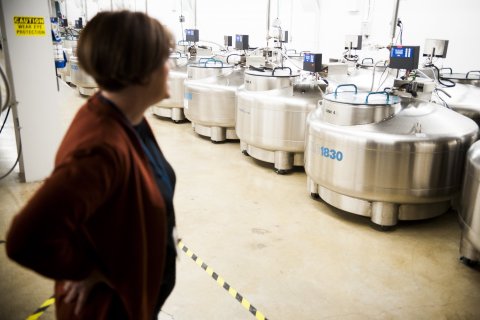
Blight, Fight, Repeat
Deep in the center's guts are cold-storage vaults built to withstand flooding (if, for example, the nearby Horsetooth Dam breaks), earthquakes, hurricane-force winds and the impact from a 2,500-pound object hurled at 125 miles per hour—an object, Walters says, "like a Cadillac," propelled, perhaps, by a tornado.
The temperature of the freezer vault within is zero degrees Fahrenheit—about the same as your freezer at home—but it is much bigger. It holds about 600,000 accessions, or seed samples. Each one has about 3,000 individual seeds, and each and every one of them was dried out before it was frozen. Some of the 1.8 billion total seeds stored in this freezer, like wheat and pea, can last 400 years. Other seeds, like lettuce and onion, might survive for only a century. Bar codes on the seed packages obscure the exact contents within—a heightened security measure put in place after 9/11. A second vault about the same size sits mostly empty, waiting for more seeds to store.
However, because water and temperature impact the shelf life of seeds differently, depending on the species, and because some genetic material (vegetative cuttings and certain types of seeds) can't survive the drying and freezing process, there's another room with slightly more advanced machinery: 56 cryogenic vats. These are quite a bit cooler than anything found in most homes; they are kept at minus 320 degrees Fahrenheit and store germplasm seeped in liquid nitrogen. Germplasm is a broad term that encompasses any living plant tissue that contains the genetic information for a given plant type and can therefore be used for breeding. Germplasm can be seeds, but it can also be leaves, stems, pollen or even just a few cells. The cryopreservation process frees this germplasm of pathogens and buys the material an estimated couple-thousand years of viability. Microbes (some beneficial, others pathogenic), such as yeast, fungi, bacteria and viruses, are also stored here.
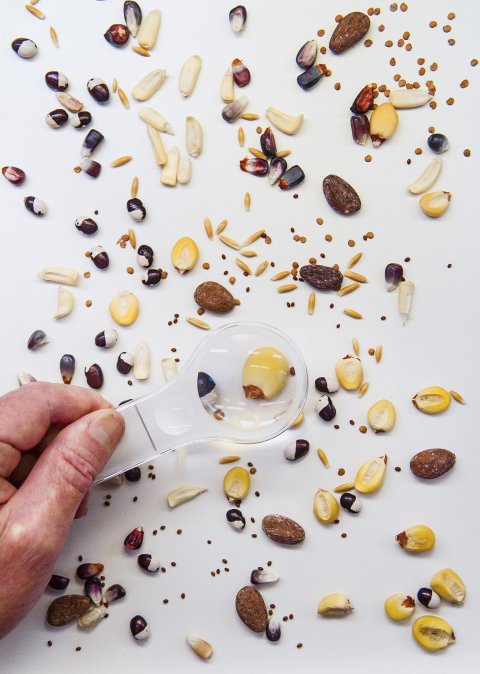
The NCGRP receives between 12,000 and 18,000 plant samples a year. Some are from international agricultural research organizations and private agribusinesses, but most are from the roughly 30 repositories of the National Plant Germplasm System. At these active sites, crop species experts evaluate, grow and distribute germplasm to researchers, professors and breeders worldwide. For example, at the Wolfskill Experimental Orchards in the farmland of Winters, California, researchers with the National Clonal Germplasm Repository grow peaches, plums, nectarines, apricots, almonds, prunes, walnuts, pistachios, persimmons, olives, pomegranates, figs and kiwifruit. They also do their own breeding; researchers at Wolfskill are currently crossbreeding wild walnut seedlings to produce offspring with natural disease resistance, which cuts down on pesticide use. The nation's active sites get an average of 8,700 requests to access their stocks annually, according to Peter Bretting, who oversees the system. But a good chunk of their work is funneled back to Colorado, into the Fort Knox of gene banks.
One group at the NCGRP curates physical samples. Another group, overseen by Walters, conducts research to make the collection more efficient by determining similarities and differences, rarities and commonalities—basically, designing a catalog of diversity. Walters doesn't particularly like the term gene bank; she prefers gene library. Her point is that this isn't a collection built only for postapocalyptic withdrawals; it is meant to be useful now. "The materials on the shelf contain valuable information about genetic diversity and nature's strategies for combating pathogens, pests, drought," she says. "The information in a public library, such as ours, is freely available."
In this analogy, a researcher working through a problem pulls a volume—an accession—off the shelf and digs through it for genetic information that might lead to a solution. For example, when potato late blight—the plant disease behind Ireland's Great Famine of the mid-1800s—was found in the U.S. in the early 1990s, researchers used plant germplasm from the USDA collection to locate genetic resistance to the pathogen in a relative of a wild potato that originated in central Mexico. About a decade ago, the USDA's Agricultural Research Service released the first blight-resistant potato, named the Defender. Case closed.
Not so fast: In agriculture, a new challenge inevitably presents itself. The cycle repeats. "Dealing with the next problem is the story of agriculture, and fixing those problems before they cause famine is the story of agricultural research," Walters says. "Our mission is to stay a couple of steps ahead of the problem. We have the knowledge and the 'spare parts' to be constantly upgrading our crops."

Citrus Apocalypse
In 1970, a leaf blight—stimulated by unusually warm and moist conditions—ravaged the American Corn Belt. Plant breeders had created a hybrid corn seed that was incredibly high-yielding, but it turned out to be particularly susceptible to the fungus that causes leaf blight. At least 80 percent of the hybrid corn growing in the U.S. were at risk of being affected. Because the agricultural industry had gone all-in on this particular corn cultivar, the disease was economically devastating: The industry had lost an estimated $1 billion by the time leaf blight was curbed.
Go back a bit further, and there are even more catastrophic examples of what can happen when we neglect to grow a diverse range of crops. In the 1800s, farmers in Ireland planted one variety of potato called the Lumper, which grows on small plots in even the worst soils. By 1845, much of the population—mainly poor people and tenant farmers—depended on a potato-heavy diet. But the Lumper potatoes were genetically identical, which allowed blight to destroy this undiversified crop and trigger the Great Famine that killed more than a million people and prompted at least another million to emigrate.
It's not clear that we've learned from our mistakes. Over the last century, 75 percent of crop genetic diversity has been lost, according to the second "State of the World's Plant Genetic Resources for Food and Agriculture" report from the Food and Agriculture Organization of the United Nations, published in 2010. Today, however, if some dreaded disease springs up to wipe out a key crop, we have a backup: the Fort Knox of gene banks. Consider the threats facing the citrus industry today.
In 1919, fruit growers in southern China noticed a mysterious condition ravaging their citrus trees. By 1921, the disease was reported in the Philippines; in 1928, similar symptoms were observed in South Africa. Over the next few decades, scientists offered up possible causes—a zinc deficiency or mineral toxicity, neither correct—as the disease manifested in Thailand and India. Finally, in 1995, the International Organization of Citrus Virologists officially named this bacterial infection: Huanglongbing (HLB).
The Asian citrus psyllid, a tiny insect hungry for the leaves and stems of citrus trees, spreads the disease through its saliva. HLB was devastating to China's citrus trees; infected grapefruits, oranges, lemons, pummelos all decline within several years. Their roots decayed, their growth was stunted, their leaves turned blotchy and mottled, and their fruit was misshapen, bitter and inedible. The fruit's tendency to become green after ripening gave the disease its nickname, citrus greening. A diseased tree can't be cured. It will die.
In 2004, scientists detected HLB in Florida—one of the hubs of the U.S. commercial citrus industry, along with California. These two states produce nearly all the nation's citrus. The crop was valued at $3.4 billion in 2012, the year that HLB surfaced on a single lemon-pummelo tree in a residential yard in a new place: Los Angeles County. Today, experts believe this disease poses the greatest threat ever faced by the world's citrus industry.
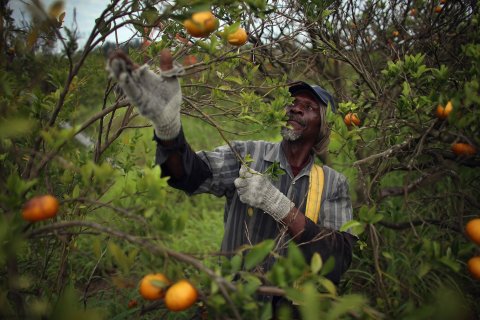
Roughly $23 million in federal money was awarded in 2014 to four universities to find solutions, such as developing HLB-resistant cultivars or creating a new antimicrobial treatment. In February 2015, Secretary of Agriculture Tom Vilsack announced $30 million in funding for 22 projects to combat HLB, including training dogs to detect infected trees so they can be isolated and removed quickly.
Because of the unrelenting nature of HLB, backing up healthy citrus genetic material for future use by growers is critical. That's where the Fort Knox of gene banks comes into play. About five years ago, Gayle Volk, a plant physiologist who works at the NCGRP, began working on a technique to preserve citrus germplasm. This fruit crop has characteristics that make it especially hard to maintain. Sometimes, the seeds could be dried out and preserved just fine; other times, they would die during the water removal process. Normal cryopreserving processes had unpredictable results as well.
Volk modified standard cryopreservation procedures to pioneer a new way to preserve the desired cultivars. Citrus samples are sent from the USDA active site collection in Riverside, California. When they arrive in Colorado, Volk's team cuts 1-millimeter shoot tips off young branches and then cryopreserves them. If they need to recover the cryopreserved materials, they thaw the tiny shoot tips and micrograft them onto rootstocks. Scientists have cryopreserved more than 100 citrus cultivars this way. So while the disease remains a problem, the backup collection does not. For now, these cultivars are staying put in the NCGRP vaults. But if HLB spreads, Big Citrus might be giving Colorado a call.
Climate's Known Unknowns
If HLB does appear in more places, it might be because of climate change. Though it's counterintuitive, the drier grounds that result from a warmer global climate are more susceptible to floods when it does rain, and those floods damage crops, carry away fertile topsoil and facilitate the spread of plant diseases. "Winters may be less harsh, and pathogens may survive winter conditions and cause more crop damage," adds Volk . "With a changing climate, there will be a need for countries to access materials that are available elsewhere that may be better adapted to alternative climates."
Those aren't the only challenges climate change will create for the global food supply. There are also the more pronounced or frequent droughts; crops in California's Central Valley—one of the most productive agricultural regions in the world—are struggling to grow in salty soil as farmers over-pump salinated groundwater to compensate for a historic drought. There's ocean acidification, which occurs when water absorbs carbon dioxide and changes the ocean's chemistry, forcing marine life to adapt or perish. Already, the shells of some animals are thinning, plankton are having trouble growing, and sea animals ranging from scallops to pteropods are dying out. The cold-water fish we eat—salmon, cod, pollack—could be next.
Then there is our livestock. Natural selection has created differences in DNA associated with traits that influence an animal's ability to cope with climate stresses: They possess varying levels of "heat shock proteins" in their bodies, which play a vital role in normal cell function and allow some to perform better in the heat and others to succeed in the cold. If a region begins to experience a changing climate, it could seriously impact the cattle industry there.
Luckily, that's another problem for which the NCGRP has a solution. Harvey Blackburn is an animal geneticist who leads the center's Animal Genetic Resources Preservation Research Unit. His team interacts directly with farmers and breeders, from small-scale operations to major corporations, and maintains the NCGRP's collection, which includes 800,000 samples—semen, embryos, ovaries, testes, blood—from 25,000 different animals. If disease ravishes an animal population or breeders make bad choices, scientists can provide the resources to reintroduce the preferable genetics.
Recently, his unit was called on to develop a technique to cryopreserve and transplant chicken ovaries. Because today's commercial poultry is sourced from only a few breeders, the genetic diversity of chickens has been dangerously narrowed. Usually, the way to hedge against the potential dangers of genetic uniformity is to freeze sperm for future use, but that doesn't work for chickens. Semen can be used to breed egg-laying hens; but after those chicks hatch, they take about a year to become sexually mature and carry only 50 percent of the desired genetics to re-establish a particular line of poultry. These hens are then bred, and their chicks will have 75 percent of the genetics. Those chicks need another year to sexually mature. The process drags on for three to five years. So Blackburn's team pioneered a way to cryopreserve ovaries from a diverse range of chicken breeds. Having the cryopreserved ovaries at the NCGRP means Blackburn's unit can increase the speed with which a struggling poultry population can be reconstituted to within one year—all they need to do is thaw them out and transplant them into some healthy chicks.
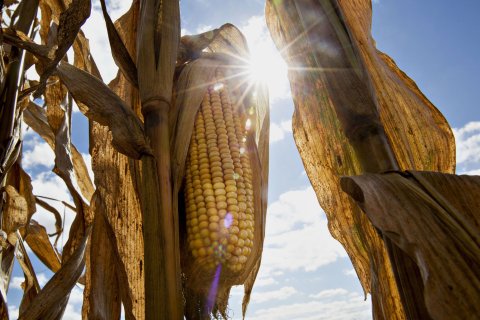
Gene banks respond to problems like this all the time. But their collections also face significant threats. A typhoon in 2006 damaged the national gene bank of the Philippines. Scientists there requested material from the NCGRP to get back on track. In 2012, the International Center for Agricultural Research in Dry Areas, a gene bank in Aleppo, Syria, was forced to abandon its headquarters in the early days of what has become an ongoing armed conflict between the Syrian government and rebel groups. ICARDA moved to Beirut, but much of its collection was damaged in the process. In September this year, ICARDA made an unprecedented request: a withdrawal from the doomsday Svalbard Global Seed Vault, embedded in the Arctic permafrost of a remote Norwegian archipelago, whose contents, nearly 865,000 seed samples, were supposed to remain untouched until absolutely necessary. Svalbard sent ICARDA samples of wheat, barley and grasses suited for dry regions to restart their war-torn collection.
In other words, gene banks—like the world's agricultures—aren't self-sufficient. The good news is that gene banks have proliferated in the past decade. There are now roughly 1,750 worldwide, and the number of samples has grown to 7.4 million. In large part, this is thanks to the International Treaty on Plant Genetic Resources for Food and Agriculture. Better known as the Seed Treaty, this agreement ensures that farmers, plant breeders and scientists worldwide can easily share the seeds and genetic materials of the world's 64 most important crops—accounting for 80 percent of the food we derive from plants. The European Union and 134 other nations, including the U.S., have ratified the agreement.
The treaty has created a vast network that, in theory, allows for experts all over the world to develop climate-smart agriculture and heighten global food security. The Fort Knox of food is at the center of this international web. It has one of the largest collections of any gene bank in the world, housing at least 10 percent of the worldwide material, and is one of the few that makes its library freely and readily available to anyone. But it's also unique in that it facilitates some of the most essential agro-research taking place today. In addition to the citrus project, Volk and her colleagues at the NCGRP have developed methods for preserving germplasm for garlic, sugar cane and Jerusalem artichokes, and they are now working on a method for grapes.
But despite the success of their work and its importance to the future of humankind, gene banking faces serious financial threats. The NCGRP, for example, has an annual budget of only $4.8 million, and there are very few international funds or mechanisms to keep the global library fully stocked. In 2016, the Global Crop Diversity Trust, the international body that manages the Svalbard collection will launch a campaign to raise $850 million for an endowment, essential to securing the future of the fund—and our food supply.
Help might be on the way, though, thanks to the global mobilization to fight climate change. When world leaders meet at the end of November in Paris for the U.N.'s 21st Conference of the Parties, one of the key agenda items will be financing the Green Climate Fund with $100 billion a year to help developing countries cope with climate change. Some of that money will go to clean energy infrastructure; lots of it will go to climate-resilience projects. But many, including billionaire philanthropist Bill Gates, have begun to call on global leaders to earmark a good chunk of that money to help those most likely to suffer from climate change: small farmers.
If the money starts to flow in that direction, it might very well end up funding crop diversity projects. Research to make crop seeds more drought-tolerant and productive is "mind-blowingly underfunded," Gates said. One organization that does this type of research is the Consultative Group for International Agricultural Research—funded in part by the Global Crop Diversity Trust and intimately connected with the global gene bank network.
The best news, though, is that after many years of ignoring the crisis, politicians and policymakers are starting to realize how quickly climate change could threaten our ability to feed ourselves. "We cannot have food security if farmers and fishers around the world are having a more difficult time growing crops, catching fish, raising livestock," said U.S. Secretary of State John Kerry at Expo 2015, a universal exposition held this past October in Milan, where the central question was how to feed the planet. The answer may very well be found in our libraries, the ones with the vast stores of genetic information.
Correction: A previous version of this article incorrectly stated that in 1970, leaf blight affected 80 percent of hybrid corn grown in the U.S. In fact, 80 percent of hybrid corn grown in that time was at risk of leaf blight; a much smaller percentage of corn was actually impacted.


